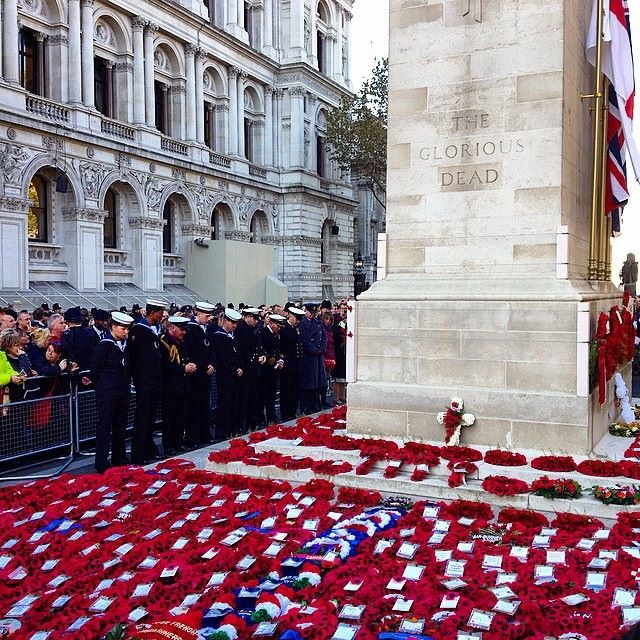WWI & WWII Sites in Europe
 The heavy toll of World War I and World War II have been felt worldwide. In Europe, it is impossible to miss moving memorials to the fallen of the Great War that are scattered in many cities, towns and villages across the continent. On this centenary of the armistice of WWI, I look back to a selection of moving and educational historical war sites I have visited in Europe. There are many battlefields, cemeteries, museums and memorials that commemorate lost loved ones in WWI & WWII. Whether you are a history buff, trying to pay homage to a fallen loved one, or simply trying to honor the memory of the fallen, consider visiting my curated list of historical sites in Europe related to both these wars.
The heavy toll of World War I and World War II have been felt worldwide. In Europe, it is impossible to miss moving memorials to the fallen of the Great War that are scattered in many cities, towns and villages across the continent. On this centenary of the armistice of WWI, I look back to a selection of moving and educational historical war sites I have visited in Europe. There are many battlefields, cemeteries, museums and memorials that commemorate lost loved ones in WWI & WWII. Whether you are a history buff, trying to pay homage to a fallen loved one, or simply trying to honor the memory of the fallen, consider visiting my curated list of historical sites in Europe related to both these wars.
Sarajevo, Bosnia
The capital of Yugoslavia is where, on that fateful day on June 28, 1914, the murder of Archduke Franz Ferndinand and his wife set in motion events that changed modern history. The assassinations eventually led to the First World War (and Second World War) as the act was a political assassination of the nephew of Emperor Franz Joseph and heir presumptive to the Austro-Hungarian Empire. There is a small, unassuming museum right on the corner of the streets where the assassination occured. You can visit the small museum and stand on the corner where the event took place which had such global implications.
WWI & WWII Battlefields & Cemeteries
Ypres
The picturesque medieval town of Ypres, Belgium can be used as a base to explore WWI battlefields and war memorials. From the town, you can easily reach Tyn Cot Cemetery, Essex Farm and The Menin Gate. The British and Commonwealth forces held their ground here for five battles during World War I. The battle of Ypres also lead to the beginning of trench warfare commonly associated with the Great War.
Essex Farm
A total of 1,185 soldiers are buried at Essex Farm, including one of the youngest casualties of the war: Valentine Joe Strudwick who was just 15 years old when he was killed. Next to the cemetery, you can still see the concrete bunkers in which a dressing station was housed. It was in one of these primitive “dug-outs” that the Canadian military doctor John McCrae wrote his world-famous poem “In Flanders Fields” at the beginning of May 1915. This WWI site is one you might not find too crowded. 
Tyn Cot Cemetery
This is the largest Commonwealth cemetery in the world. This cemetery doesn’t get a lot of American visitors because there are no American soldiers buried here. However, it is an incredibly evocative place to learn about the incredible sacrifice that the British, Canadian, Australian and Commonwealth forces paid. Approximately 90,000 British and Commonwealth soldiers died in the Ypres Salient but their identities could not be established at the time of burial or their graves were lost in subsequent fighting. The names of these 90,000 unidentified men of the British and Commonwealth Forces are inscribed on four memorials to the missing in the battle sector known as the Ypres Salient. One of these four memorials is the Tyne Cot Memorial to the Missing.
Menin Gate
The Menin Gate is a massive memorial dedicated to the British and Commonwealth soldiers that fell during the various battles surrounding the medieval town of Ypres, Belgium. Several hundreds of thousands of British Expeditionary Forces and Canadian Forces perished during these bloody battles of WWI. Make sure you stay for the last post ceremony that starts at 20:00 every day. This ceremony has taken place every day (except during the German occupation during WWII) since the dedication of the gate in 1928.
Normandy American Cemetery
The Normandy American Cemetery and Memorial honors the American troops who died in Europe during World War II. There are almost 10,000 fallen soldiers buried here. The cemetery is located not far from the D-Day Beaches The invasion at this beach head marked the largest allied invasion in WWII in 1944. Visiting the cemetery and beaches takes a full a day.
Bastogne
The small town of Bastogne, Belgium is near the site of some of the bloodiest and fiercest fighting of World War II. The offensive campaign by the Germans, that eventually encircled the allies in the dense Ardennes forest, became known as the Battle of the Bulge. Several regiments of the 101 Airborne, including the famed Band of Brothers (Easy Company 506 PIR), were trapped behind enemy lines and paid the ultimate sacrifice. Start your visit at the Bastogne War Museum before heading out to the Ardennes to towns like Foy. 
War Museums in Europe
Caen Museum
No visit to Normandy is complete without visiting the Memorial de Caen. It’s a great first stop before heading to the Normandy D-Day Beaches. The museum also offers Day Passes and complete tours of the D-Day Landing Beaches. This museum is easily reachable from Paris via TGV train. The day tours include pick up from the train station and lunch.
Imperial War Museum
The Imperial War Museum is one of my favorite museums in London. Admission to the museum is free and it can be easily reached by public transportation. In my opinion, there is no greater museum in London dedicated to the history and lessons of WWI & WWII. There are lots of exhibits and special exhibitions throughout the massive museum. Visitors can easily spend all day at the museum because there is so much to learn and the depth of information presented is extensive.



























Eric
Maybe you should visit and recommend Museum of the Second World War in Gdansk, Poland. It is where the WWII started in September 1st of 1939.
Here is the museum website: https://muzeum1939.pl/en
The exihibits and films were second to none. Very large place.
Angel
Hi Eric! I’ve been to Poland several times but never Gdansk. Good tip! Thanks and Happy Travels.